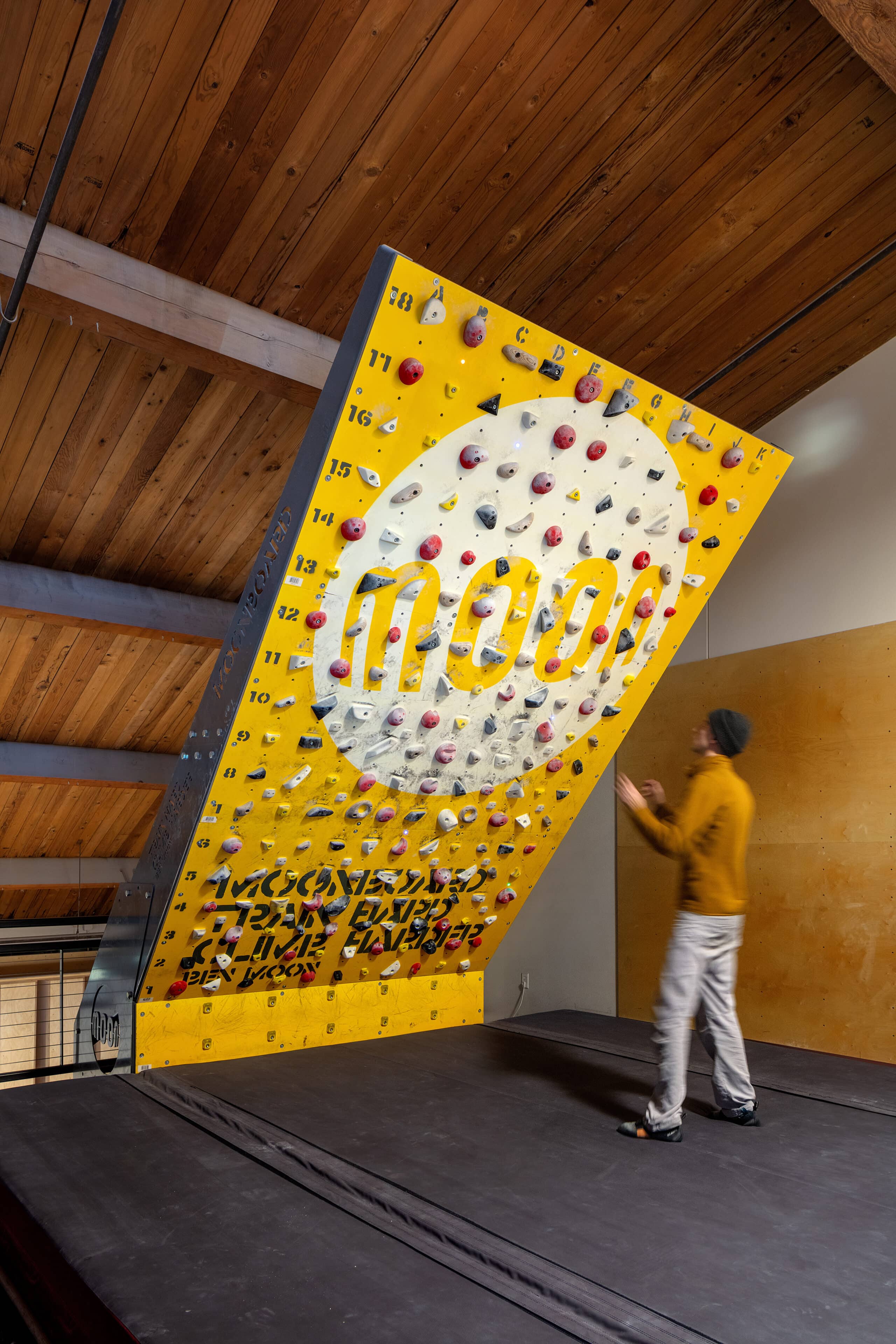The integration of technology into sports has opened exciting possibilities, and AR and VR are transforming the world of bouldering. This blog post explores applications of AR and VR technologies, how they enhance performance, and ways how smaller climbing gyms can deliver interactive experiences similar to the MoonBoard, with little budget.
Current Applications of AR and VR in Bouldering
MoonBoard and Similar Systems
The MoonBoard is a standardized, interactive training wall equipped with an LED system controlled via an app. It connects climbers worldwide by offering identical routes regardless of location. The app features over 180,000 climbing problems, allowing users to track progress, compete globally, and refine their skills through structured training.

AR Guidance for Climbing
Augmented reality is used to project movement sequences or highlight optimal hold and foothold positions on climbing walls. Smart glasses, for instance, can show the best route in real-time, helping climbers—especially beginners—improve their technique and efficiency.

VR Simulations for Training
Companies like ClimLab are utilizing VR to create immersive training environments. These systems allow climbers to practice complex movements and scenarios, such as overhangs or challenging outdoor routes, within a safe virtual setting.

How Technology Enhances Performance
Data-Driven Training
Wearables and sensor integration with AR/VR systems enable real-time analysis of movements, providing instant feedback on technique and performance. This data-driven approach helps climbers identify weaknesses and refine their skills effectively.
Strength and Technique Improvement
Tools like the MoonBoard and Tension Board use illuminated grips and data-backed training routines to build specific skills such as finger strength and endurance. These systems promote repetition and measurable progress, crucial for advanced climbing development.
Gamification and Engagement
AR/VR applications incorporate gamified elements, such as scoring for precise holds or timing challenges, to boost motivation. These features make training more engaging and enjoyable, encouraging climbers to push their limits.
Creating a MoonBoard-Like Experience for Smaller Gyms
Smaller gyms can leverage innovative, cost-effective technologies to replicate interactive training environments without significant investment:
- Route Projection Systems: Affordable AR tools can project climbing routes onto walls, eliminating the need for physical LEDs.
- Mobile Apps and Smart Holds: Bluetooth-enabled holds can be programmed to light up in specific patterns, offering flexibility and customization.
- Localized Databases: A community-driven database of climbing problems fosters collaboration and provides tailored training opportunities.
AR and VR are revolutionizing bouldering by enabling personalized training, fostering global connections, and making professional-grade tools like the MoonBoard more accessible. For smaller climbing gyms, creative solutions such as AR projections offer an exciting path to deliver interactive and motivational training experiences. As AR/VR technologies continue to advance, climbing may soon evolve into a hybrid reality, seamlessly blending the physical and digital worlds.